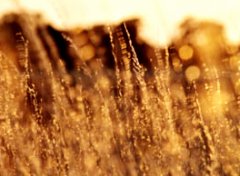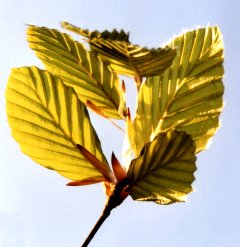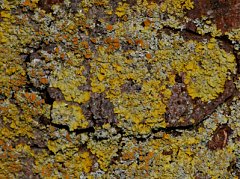Spliced feed for The Science Network |
| Doctor Who Always Plays Hard to Get [SciScoop Science Blog] Posted: We've all had the doctor who plays hard-to-get. Aloof, always in a hurry, impossible to have a real conversation with. But it's not you - or your chronic halitosis. Doctors are usually paid based on how many patients they see in a day. So, knowing this, can you really blame your doctor for always having one foot out the door? A new publication "Navigating the Medical Maze" is set to empower everyday patients looking for the best from their health care. |
| Biomonitors [Sciencebase Science Blog] Posted: 25 Apr 2008 07:00 AM CDT
Keeping a weather eye on atmospheric pollution is a large-scale, costly and time-consuming activity. However, there just happens to be a vast network of self-contained, self-powered units around the globe that can respond to the presence of toxins, radioactive species, atmospheric particulates and other materials in the environment and could be used to build up a local, national or international picture of environmental conditions - the world’s plants, mosses, and lichens. In a forthcoming special issue of the International Journal of Environment and Pollution (2008, Volume 32, Issue 4), researchers from various fields explain how living organisms can be used to track the dispersal of atmospheric pollutants, particulates, and trace elements. They also explain how plants and other so-called biomonitors have been validated across the globe. Writing in an editorial for the IJEP special issue chemist Borut Smodiš, a senior research associate at the Jožef Stefan Institute, in Ljubljana, Slovenia, explains how biomonitoring can be used in environments where a technological approach to monitoring is not only difficult and costly but may be impossible. “Biomonitoring allows continuous observation of an area with the help of bioindicators, an organism (or part of it) that reveals the presence of a substance in its surroundings with observable and measurable changes (e.g. accumulation of pollutants), which can be distinguished from the effects of natural stress.” Smodiš points to numerous other advantages of biomonitoring: “Simple and inexpensive sampling While any organism might be used as a biomonitoring agent, Smodiš points out that mosses and lichens, which lack root systems, are dependent on surface absorption of nutrients. This means that they accumulate particulates and dissolved chemical species from their surroundings rather than from the soil and so could be more appropriate biomonitors for atmospheric pollutants. In 1998, the International Atomic Energy Agency part of the United Nations, started a Coordinated Research Project on biomonitoring. Several papers in the special issue of IJEP detail methodologies, case studies and other aspects of various projects within this initiative and point to future avenues that might be explored.
In the paper “Atmospheric dispersion of pollutants in Sado estuary (Portugal) using biomonitors”, Maria do Carmo Freitas of the Instituto Tecnológico e Nuclear Reactor, in Sacavém, Portugal, and colleagues used instrumental neutron activation analysis (INAA) and proton-induced X-ray emission (PIXE) to investigate pollutant levels in epiphytic lichens. They found that temperature and humidity had a more prominent effect on pollutant accumulation than wind direction or rainfall levels, which could affect the interpretation of other biomonitoring results. Ni Bangfa of the China Institute of Atomic Energy, Beijing, and colleagues in their paper “Study on air pollution in Beijing’s major industrial areas using multielements in biomonitors and NAA techniques” used NAA to analyze three types of plant leaves from Chinese white poplar, arborvitae, and pine needles. They found that northeast Beijing is a clean area while southwest is relatively polluted. In “Biomonitoring in the forest zone of Ghana” B.J.B. Nyarko of the Ghana Atomic Energy Commission and colleagues studied the distribution of heavy metals in agricultural, industrial and mining areas in the first survey of its kind in Ghana using lichens as biomonitors. They found that the area around gold mining regions were most heavily polluted, with arsenic, antimony, and chromium while industrial sites had raised levels of aluminum, iron, and titanium. Farming regions were much less affected by heavy metal pollutants, as one might expect. H.Th. Wolterbeek of the Delft University of Technology, Delft, the Netherlands in ” Large-scale biomonitoring of trace element air pollution: local variance, data comparability and its relationships to human health” used biomonitoring data to determine air concentrations and metal deposition and discussed how such studies might be used in the future to correlate pollution with human health issues. Other researchers including Bernd Markert of International Graduate School Zittau, Zittau, Germany, Eiliv Steinnes of the Norwegian University of Science and Technology, in Trondheim, and their respective teams also further validated the potential of biomonitoring approaches to pollution.
While biomonitoring techniques are improving rapidly and researchers are quickly validating results at the local level, Smodiš points out that there is no single species that could be used on the global scale. Moreover, different weather conditions around the globe mean that techniques are not necessarily comparable. With that in mind, environmental sensor manufacturers may rest assured that there is still a market for their instrumentation despite the best efforts of the mosses and lichens. A post from David Bradley Science Writer |
| Predawn moon and Jupiter last weekend of April 2008 [Earth & Sky Podcast] Posted: 25 Apr 2008 04:04 AM CDT Friday, April 25, 2008. Throughout this weekend, the waning gibbous moon and blazing planet Jupiter shine close to one another in the dawn and predawn sky. For most of planet Earth this weekend, the moon and Jupiter appear closest together on Sunday morning. This posting includes an audio/video/photo media file: Download Now |
| Nano-vaccines could immunize developing world [Earth & Sky Podcast] Posted: 22 Apr 2008 04:04 AM CDT New nano-vaccines could help wipe out certain diseases in the developing world. University of Michigan’s James Baker talks about how entire populations in remote areas could be vaccinated at once. This posting includes an audio/video/photo media file: Download Now |
| You are subscribed to email updates from The Science Network To stop receiving these emails, you may unsubscribe now. | Email Delivery powered by FeedBurner |
| Inbox too full? | |
| If you prefer to unsubscribe via postal mail, write to: The Science Network, c/o FeedBurner, 20 W Kinzie, 9th Floor, Chicago IL USA 60610 | |



No comments:
Post a Comment